HRW, AI And Other NGOs Criticise Croatian Border Monitoring Mechanism
ZAGREB, 3 Aug, 2021 - Human Rights Watch, Amnesty International and six other NGOs on Tuesday criticised the new Croatian border monitoring mechanism, expressing concern about the body's independence and efficiency.
Recent media reports and official statements about the newly established border monitoring mechanism raise serious concerns, especially over the body's mandate, efficiency and independence, Amnesty International, Are You Syrious, the Centre for Peace Studies, the Danish Refugee Council, Human Rights Watch, the International Rescue Committee, Refugee Rights Europe and Save the Children said in a joint press release.
The Croatian government announced that the negotiations on the mechanism have concluded, but has not publicly disclosed further details about its structure or functioning, according to the press release.
The independent mechanism should monitor the treatment of illegal migrants by police officers, following several reports by NGOs of violations of migrants' rights at the border, which the Croatian government denies. The establishment of the mechanism was earlier proposed by the European Commission.
"Any border monitoring mechanism should be independent in law and practice and have sufficient resources and a robust mandate to monitor border-related operations anywhere on the territory of a state," the NGOs said.
The source of contention is the fact that according to the NGOs, the mechanism's mandate would be limited to police stations near the border and border crossings, while most contentious actions of the Croatian authorities take place further away from them, the press release says.
The objection also referred to the involvement of other institutions and organisations.
"To ensure that the mechanism is credible and effective, it needs to involve independent institutions or organisations that have monitoring experience – such as civil society organisations, United Nations agencies, and national human rights institutions – that are not financially dependent on the government;" they said, adding that any mechanisms that do not meet such standards could undermine the European Commission's efforts to end violence on the Union's external borders.
"The Commission should actively review and assess the mechanism to ensure that Croatian authorities put in place a system that can credibly monitor compliance with EU law in border operations and should provide political and financial support only to a system that meets the above standards," the NGOs said.
For more about politics in Croatia, follow TCN's dedicated page
Croatia Tightens Border Controls with Bosnia and Serbia
ZAGREB, June 20, 2020 - Croatian police have tightened controls on the borders with Bosnia and Herzegovina and Serbia following new cases of coronavirus infection originating from the two countries, Interior Minister Davor Bozinovic said on Friday.
Bozinovic, who heads the national coronavirus crisis management team, told Jutarnji List daily that tighter border controls had been imposed on Thursday.
For the latest travel info, bookmark our main travel info article, which is updated daily.
Read the Croatian Travel Update in your language - now available in 24 languages
Join the Total Croatia Travel INFO Viber community.
"Anyone wishing to enter Croatia must state their reason for travel and present a supporting document to that effect, for example that it is in the economic interest of our country," Bozinovic said.
He noted that Croatia had never fully opened its borders to Serbia and Bosnia and Herzegovina as it had to ten EU countries which have a good epidemiological situation.
Jutarnji List said that in the last two days travellers from Serbia and Bosnia and Herzegovina who wanted to enter Croatia without reason backed up by proper documentation had been turned back.
Stricter border controls were imposed because most of the new coronavirus cases identified in Croatia in the last week were connected with the two countries.
Bozinovic said that the situation in Croatia would not escalate because epidemiologists had traced most of the infected people and established the source of the infection.
Crossing the Neum Border with Croatia & BiH in the Corona Era: New Rules (July 24 Update)
July 24, 2020 - Crossing the Neum border between Croatia and Bosnia and Herzegovina in the corona era has a slightly different procedure.
July 24 update - TCN passed through the Neum Corridor twice this week. Waiting times at both borders were under 3 minutes on both occasions. Passports are scanned on the Croatian side and you have one hour to transit through. There were no border guards on the BiH side. There are no issues with any nationality transiting through.
PLEASE NOTE: THIS SITUATION CONTINUES TO BE THE CASE AFTER JULY 1 BORDER OPENING UPDATE. IF YOU ARE IN TRANSIT, YOU CAN PASS THROUGH.
One of the most-asked questions every summer is from tourists wanting to travel between Split and Dubrovnik, and what happens at the Neum Corridor, the 23-km coastal strip, sometimes called the Bosnian Riviera, which divides Dubrovnik and southern Dalmatia from the rest of Croatia? With Croatia now in the EU and on the brink of joining the Schengen zone, it means that a journey between Dalmatia's most popular tourism cities entails leaving the EU for about 20 minutes, before reentering Croatia at the Neum border.
The usual procedures are explained in this Total Croatia article on how to get from Split to Dubrovnik. If you don't want to leave Croatia, it is possible to stay within the country by taking the ferry service from Ploce on the mainland across to Trpanj on the Peljesac Peninsula. The Peljesac Bridge is also due for completion in 2022, at which point independent Croatia will be joined in one contiguous territory for the first time.
On my recent tour of the Croatian border control system, I asked about Neum and was surprised to learn that there was a change in the border crossing rules during the pandemic, a change which has been in force for a couple of months now, I think.
The Neum border is currently ONLY available for transit passengers. As such, you can travel on an ID, but your stay in BiH is timed. You have an hour to cross the 23 km. Your journey is timed, and if you take more than an hour, you will have problems as you try and reenter Croatia.
The Bosnian border police are also actively encouraging those who pass through the Neum border that this is transit only.
I always stop for lunch at Neum when I am driving down to Albania or Montenegro, but I guess this is discouraged for the moment.
If anyone has any experiences of recent travel across the Neum border, please let me know, and we will add to this resource. Send to This email address is being protected from spambots. You need JavaScript enabled to view it. Subject Neum.
For the latest travel info, bookmark our main travel info article, which is updated daily.
Join the Total Croatia Travel INFO Viber community.
Read the Croatian Travel Update in your language - now available in 24 languages
Behind the Scenes at the Croatian Border Control System: AMAZING!
June 9, 2020 - How is the Croatia border control working? TCN takes an exclusive tour of the working system, and our verdict is 10 out of 10 for the Croatian police and border control. As for the tourism chiefs...
Until last week I had only met one government minister in my 18 years here, as well as Prime Minister Andrej Plenkovic.
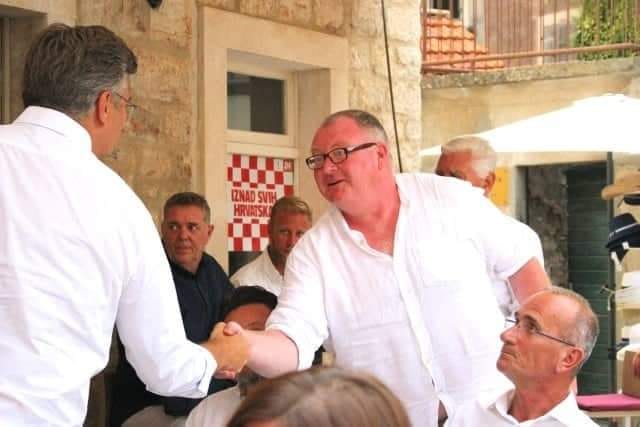
(Photo credit Vivian Grisogono)
I met the current PM a couple of years ago in Jelsa, when he called me over for a chat, a chat which ended with a promise that he would not be suing me.
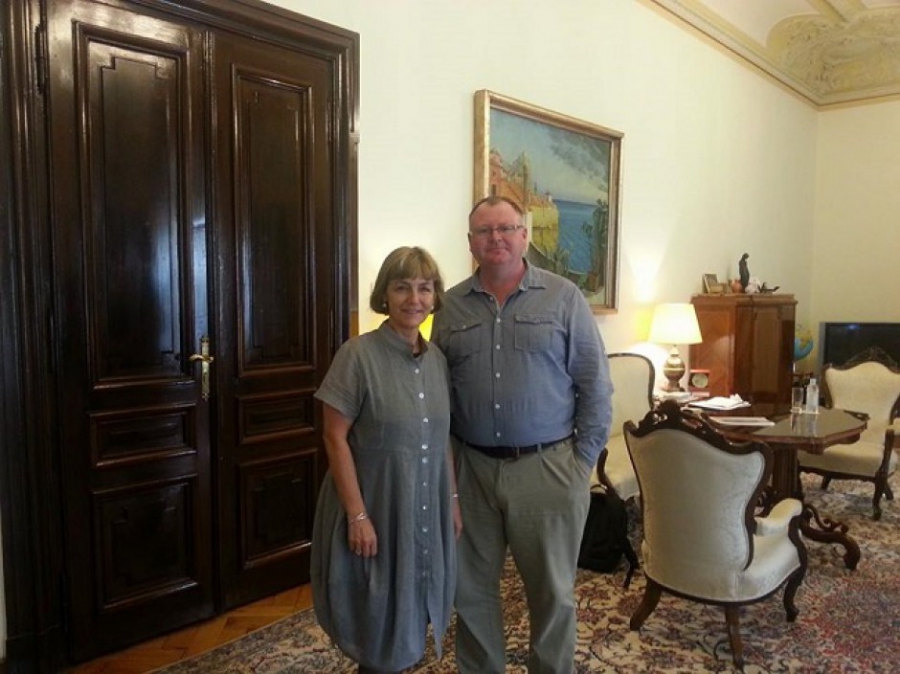
The only minister I met was the then Foreign Minister, Vesna Pusic, who kindly agreed to be my first ever interview on a new news portal called Total Croatia News, which launched on July 7, 2015. You can read the interview here.
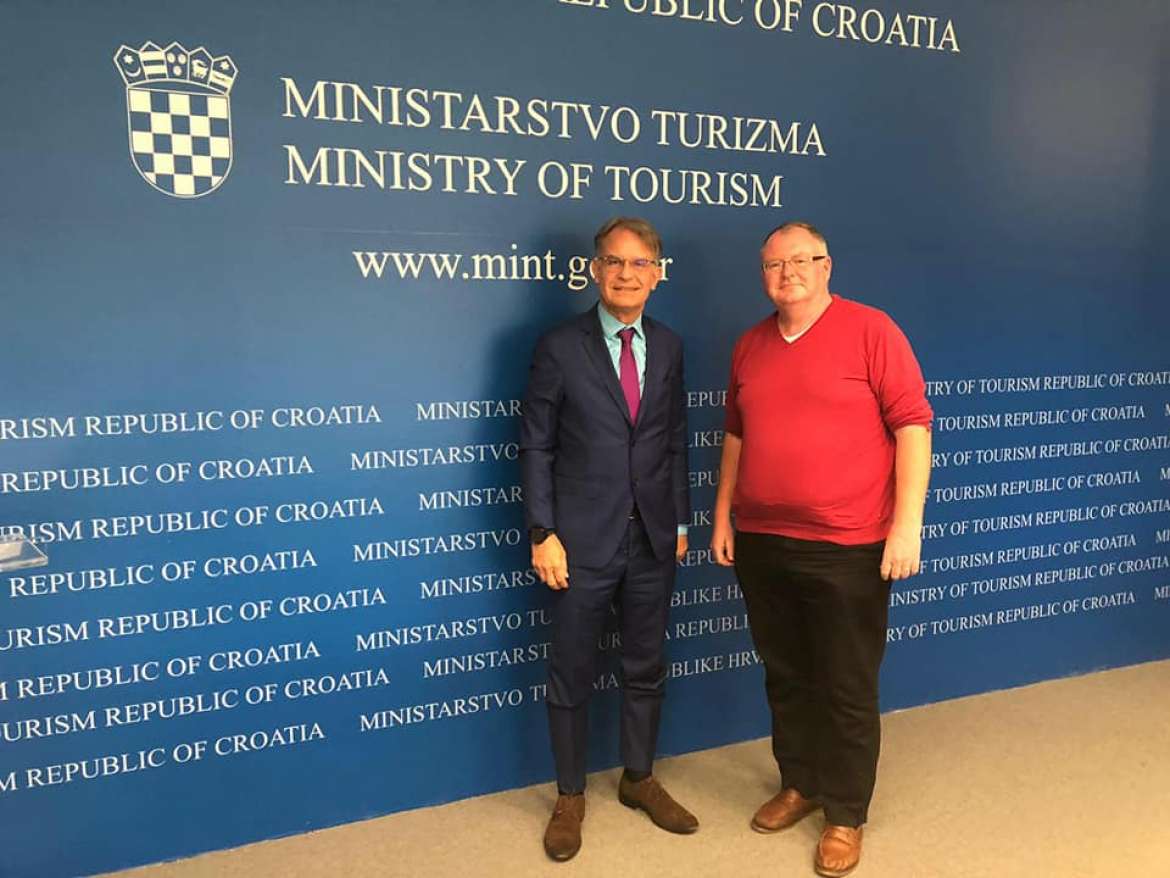
Last week, I met two ministers in the same week, and both very fascinating insights into the current situation in the corridors of power as Croatia presides over the Presidency of the EU during the COVID-19 pandemic.
First up, Minister of Tourism Gari Cappelli, who called me up for a chat and meeting in his office, during which he gave TCN some exclusive updates on the plans of the EU to open borders. You can read the interview here.

On May 17th, I visited the Croatian - Slovenian border with Kresimir Macan, former communications director for PM Plenkovic. As information about the actual situation at the border crossing was so unclear, I requested - and received - permission to visit the border with Macan to report on the situation first hand. It was quite an eye-opening experience: Who Can Cross the Croatia Slovenia Border? Who Cannot? A May 17, 2020 Border Visit
Since that visit to the border, an online registration form became available on the Interior Ministry website at the address entercroatia.mup.hr. The form, now in 11 languages, was intended to speed up the border procedure, as well as help the police track all visitors in the event of a corona outbreak.
At our May 17 border visit, the pace of the border control was painfully slow. The border police had to manually enter the details of the reservation and record contact details. Each car was taking 5-8 minutes to process, which would clearly be a disaster in the peak season. An emergency software fix was procured, and I was curious to see how it worked. I will refer to it more below, but this information is important for EVERY foreign visitor to Croatia at the moment, whether you are coming by land, sea or air.
1. If you fill the form in with your details (choose from 11 languages), you will receive an email from the police confirming receipt. Print this off, as well as your confirmed reservation, and show at any borders you encounter on the way, and you will be allowed to transit.
2. The procedure to proceed through the border if you have already registered is less than one minute, so 5-8 times quicker than three weeks ago. Simply hand over your passport, which will be scanned. All relevant details will be sent to Interpol, Schengen, and the Croatian ministries of health, tourism and the interior. This includes all the accommodation details and your contact numbers entering into the system. It is an outstandingly efficient system and is reducing the waiting time at the border considerably.
3. Even if you are from the 10 countries which now have open borders with Croatia, the official advice is to fill in this form, because it will reduce the waiting time at the border.
A fabulous system, put together in record time, and severely reducing the waiting times at the border just in time for peak season. Congratulations to the Croatian police and all involved in the project.
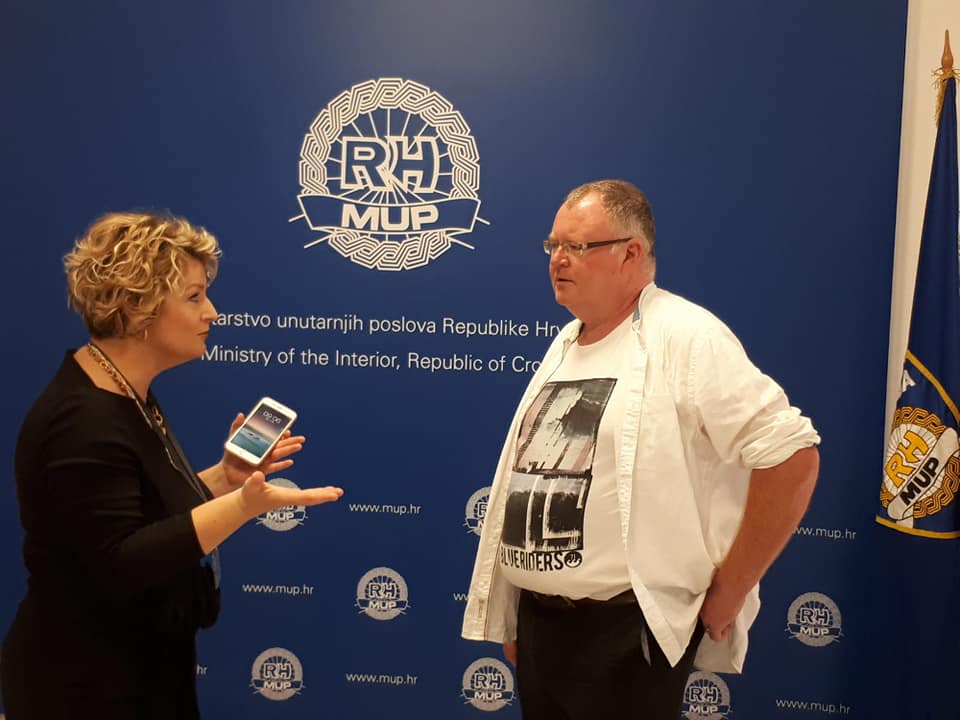
My tour was organised by Marina Mandic, the Ministry PR lady. It was such a seamless service that I actually felt I was no longer in Croatia, but had been transported to another country where efficiency was the order of the day.
I am often very critical of Croatian officials, so here it is, when I see someone doing an outstanding job, I am happy to tell the world. Bravo, Ms. Mandic, and thank you for such a fascinating tour.
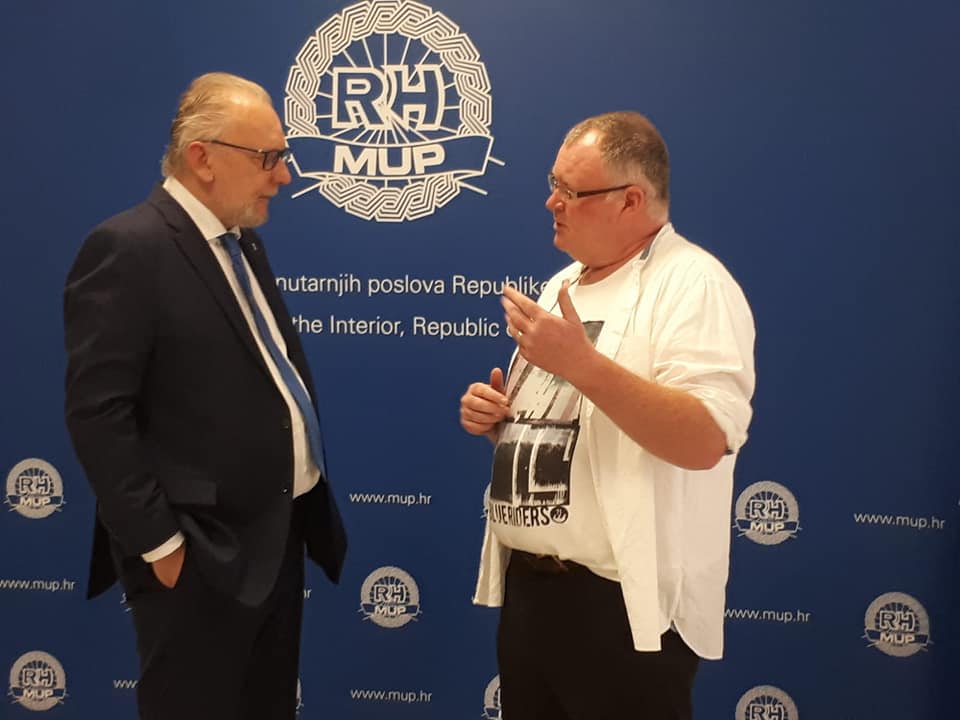
Minister Bozonovic was happy to chat and answered various questions that I had. It was a very organised process from start to finish.
After an overview of border procedures with the Assistant Head of the Border Police Directorate, Gilio Toic Sintic, it was time to enter the room about which I was most curious - to meet the team answering all the emails from tourists trying to get official information about their particular cases - would they be allowed to visit Croatia?
After a slow start, the official information about travel to Croatia started to come together. The best source of information came on the Interior Ministry website, and a dedicated FAQ section covered most of the questions. For those who could not find an answer to their question (or were too lazy to search), there was a form to fill in where you could post your question. This FAQ and form is available in English, German and Croatian.
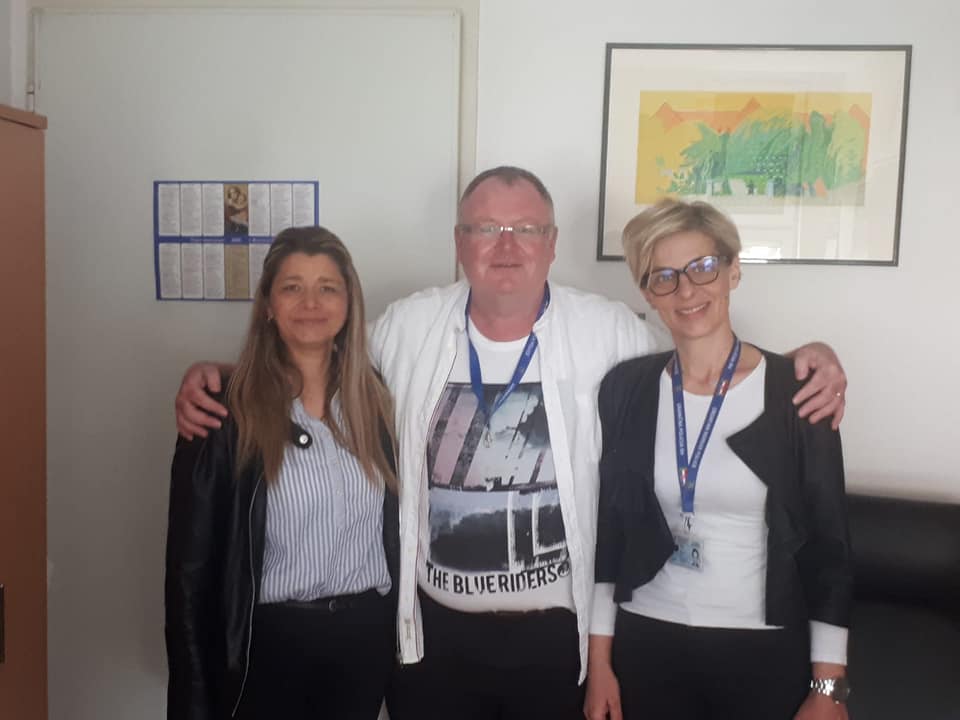
Two days after Kreso Macan and I returned to the border visit of May 17, we launched the Viber community, Total Croatia Travel INFO in an attempt to try and help tourists find the latest information and answer their questions, as there was so much confusion out there.
We also started a daily travel update page, with all the latest information and links to the latest news. Soon after that, we had the daily travel update available in 24 languages.
One of the many interesting bits of feedback we got from our new Viber community (join here, but you need to download the app), was that it was taking 5, 8, 9 days to get an answer from the official email address at the ministry - if there was an answer at all. I was curious to find out why, and so I was curious to meet the team answering the emails.
It was quite an eye-opener.
Meet part of the dedicated team from the Croatian police department (that's right, while Croatia is breathing tourism, it is left to the police to answer those tourist questions such as 'when will flights to Split start?' 28,000 questions so far. Questions in Hungarian and Portuguese. So many emails, indeed, that the Croatian police have had to request help from police departments all over the country.
In a land of a national tourist board, 20 regional and 319 local tourist boards, a Ministry of Tourism, and a tourism section in the Croatian Chamber of Economy, there was nobody free to answer the emails, so the police have had to allocate extra resources to help.
At a time when police resources are already stretched due to corona. Ministry of the Interior 3, the official Croatian tourism chaps 0.

I was expecting to find huge inefficiency due to the unanswered emails, but quite the opposite. Here was a dedicated bunch of people working hard to get through the mountain of emails. In all manner of languages that they could not comprehend.
I offered to show them some tools which could help reduce the job. I showed them our Viber community and our travel update.
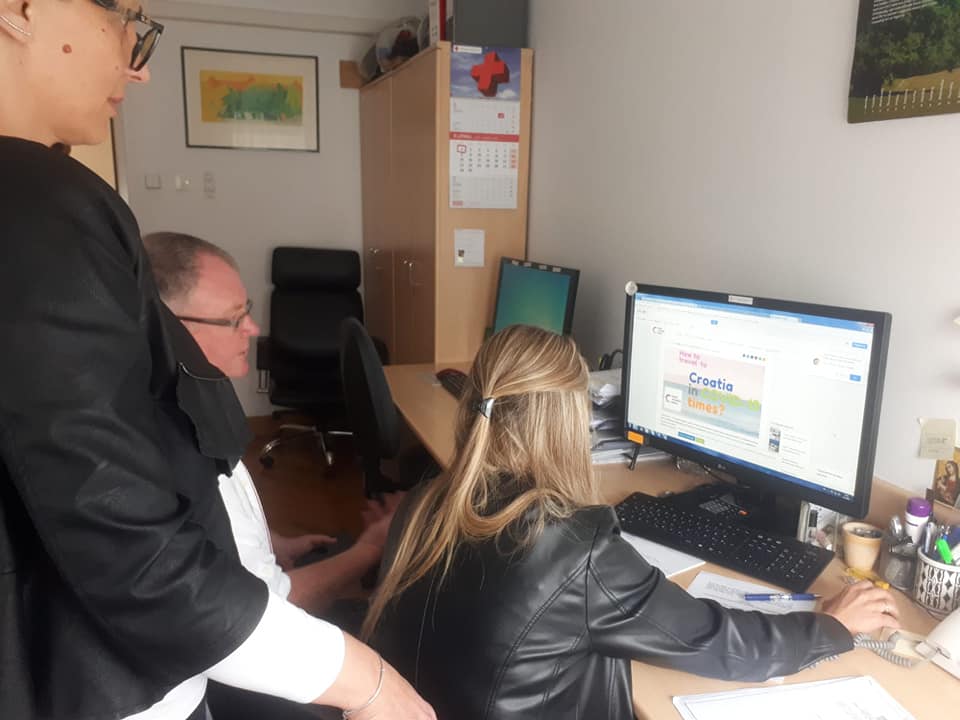
And our travel update in 24 languages. Feel free to send the link, copy a paragraph of info, whatever it is that you need to do to make your job easier.
Two immediate takeaway suggestions I have to share with you.
1. If your enquiry is tourism-related, send your enquiry to This email address is being protected from spambots. You need JavaScript enabled to view it.. This is the Croatian National Tourist Board, and they are one of the most responsive press departments I have encountered in Croatia. They will (or should) have better information on tourism matters than the police.
2. If you want a quicker response from the police to your enquiry, they can comfortably cope with enquiries in English, German and Croatian. If you send your enquiry in Portuguese or Hungarian, it will be greeted with less enthusiasm, and so probably a slower response time. The police are VERY busy, so my advice is to make it as easy as possible for them.
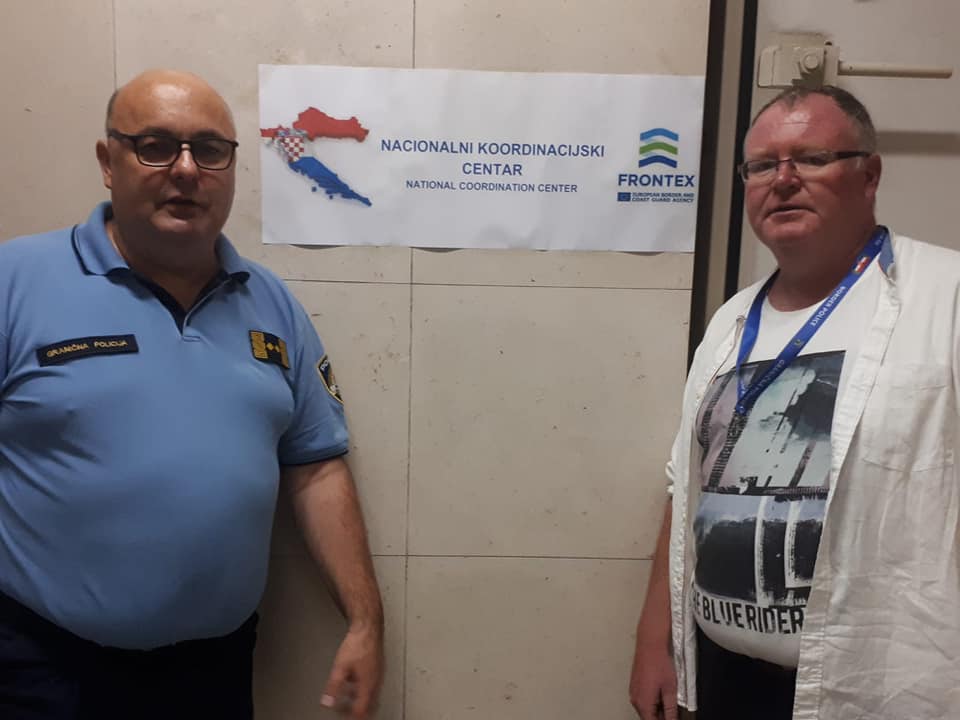
Next up, the National Coordination Centre, the pulse of border control.
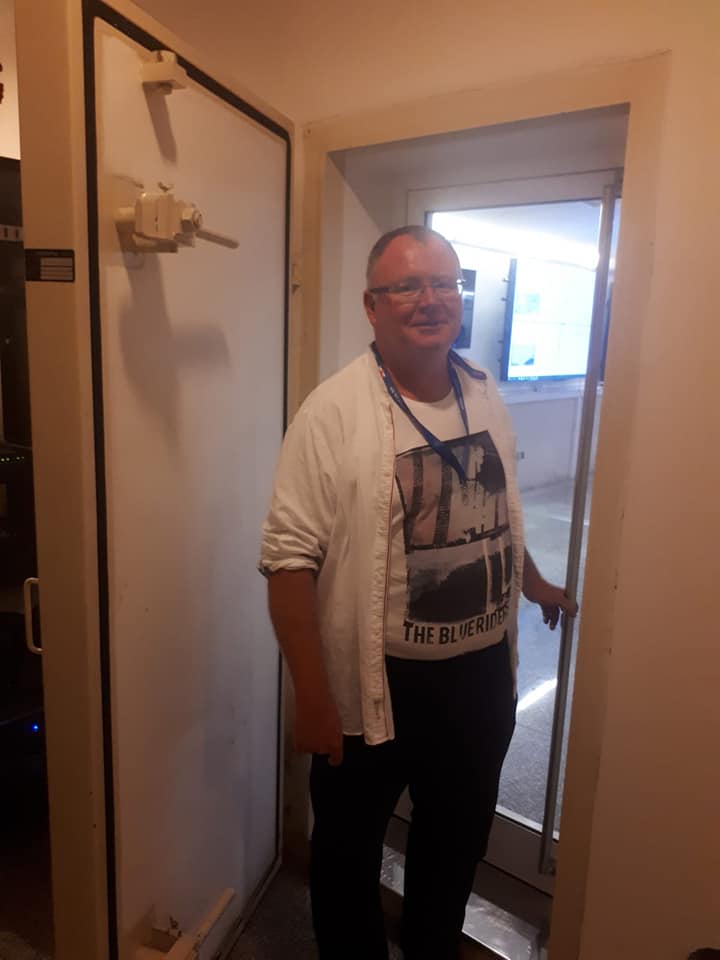
This was a very secure room...
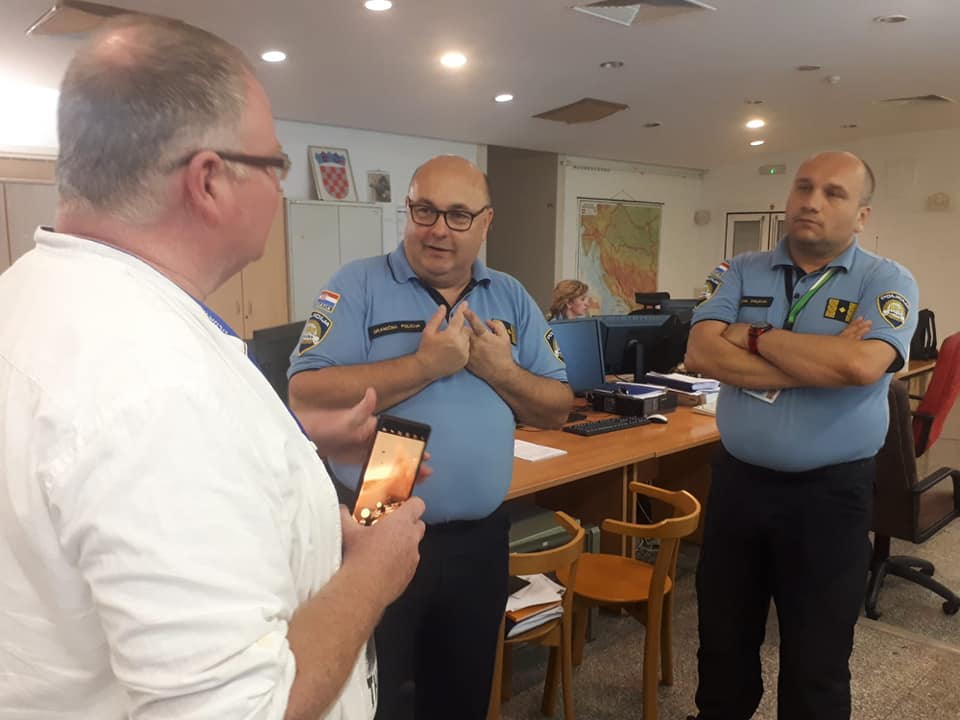
I wasn't sure how welcome an enquiring foreign journalist would be, or how much access I would get, or what photos I would be allowed to take and publish.
The answer was that there were some limits regarding photography - understandably - but everyone I encountered was extremely forthcoming with information and professional in its approach. Did I say that this ministry behind the scenes ran like clockwork?
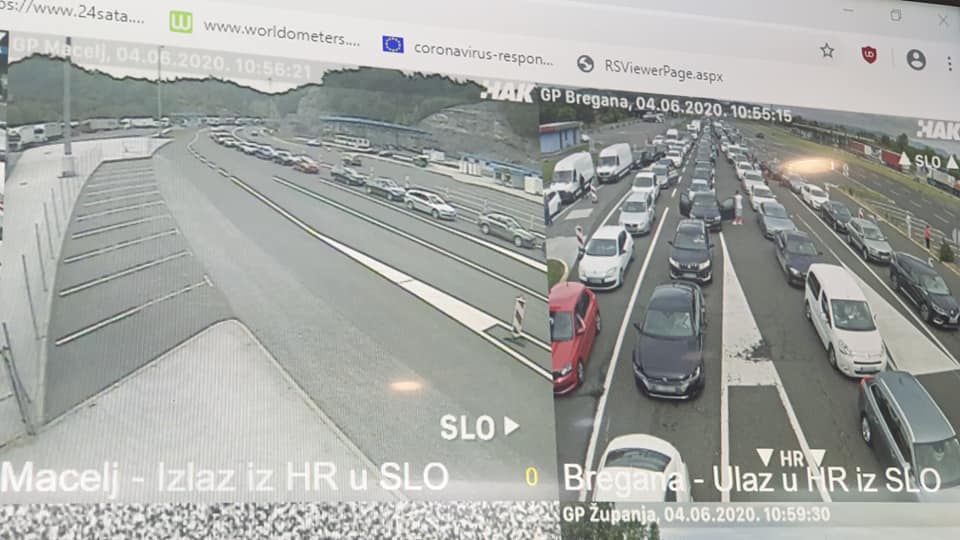
All the borders on one giant screen, so that resources could be reallocated as the need allowed. There was also a customs officer working in the control room, so that all border issues were addressed efficiently and immediately.
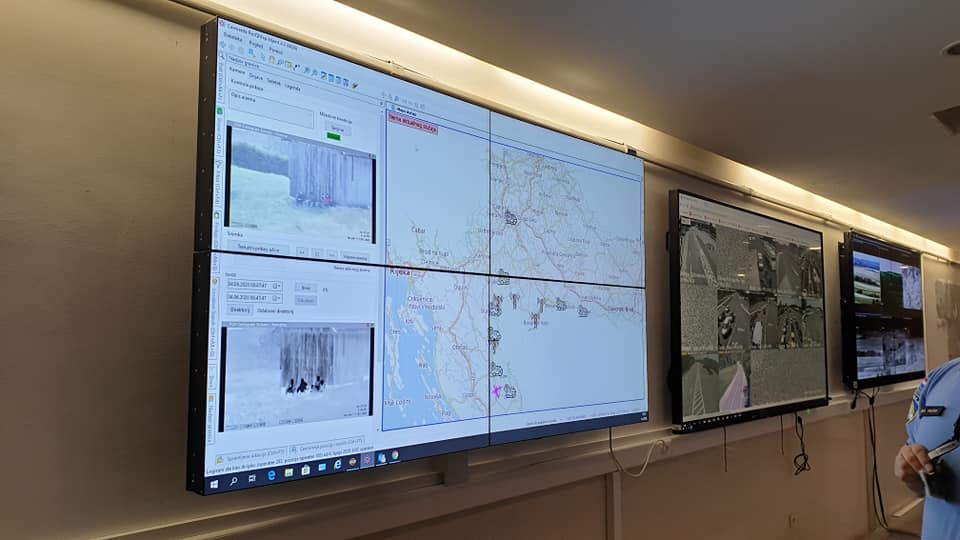
And the police were keeping on top of migrant movements on the eastern borders.
Really impressive stuff, all explained with warmth and humour. My question about when Croatia would join Schengen drew a wry smile or two, and we had a good exchange over the policing of Liberland.
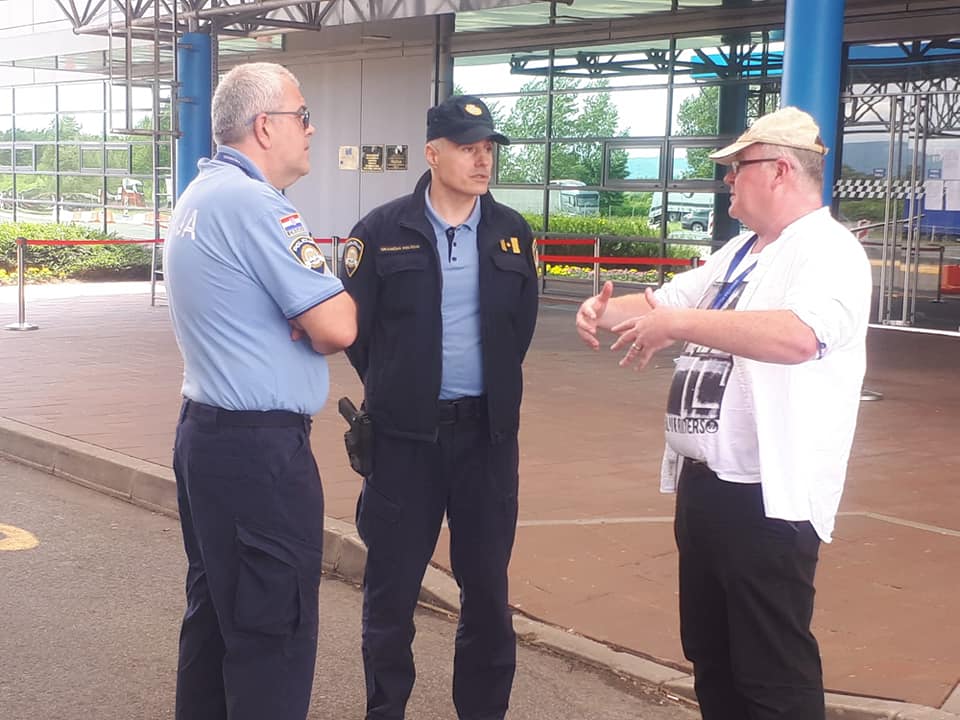
Next it was off in the Macan Porsche to Bregana, the main border crossing between Croatia and Slovenia, where the border police could not have been more helpful. After explaining our mission, they again gave us more access than I was expecting.
It seems that the system with the online form is working well. Between May 28 and June 4, 56,000 people entered Croatia using the form, from a total of 25,799 applications. One thing that surprised me a lot was the number of transit passengers. About half the foreign visitors entering Croatia are in transit to Serbia, Bosnia, Greece and Turkey etc.
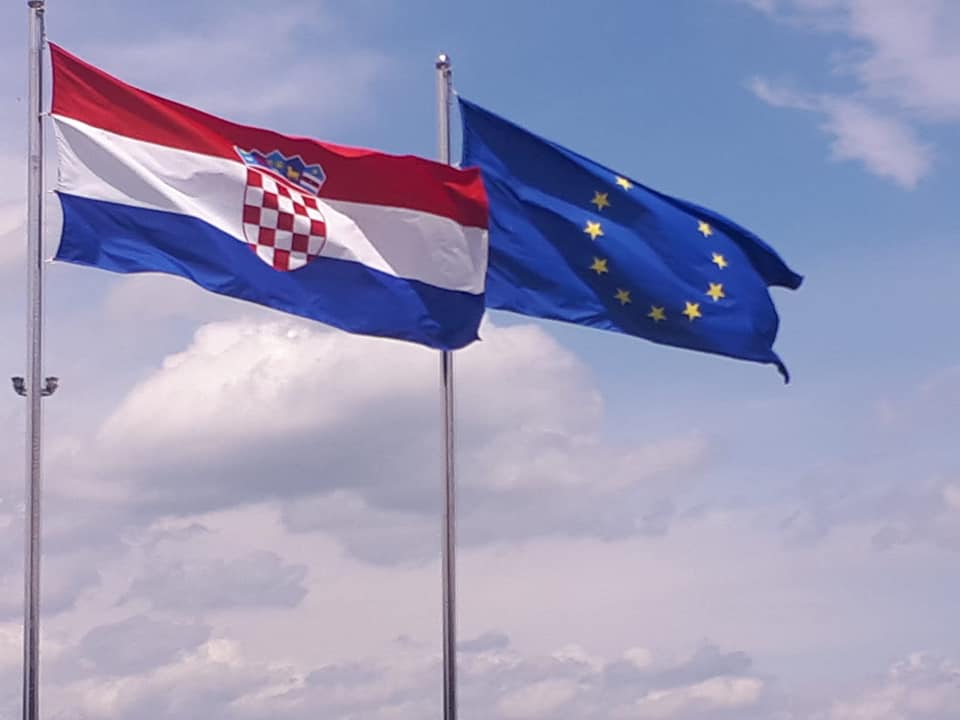
Yes there were some people who were refused entry, an average of 2-3 a day at Bregana (this border currently handles between 5 - 8,000 people a day). This is true in and out of the season, but the message was clear - if you have your documentation in order and have filled in the entercroatia.mup.hr form, you will have no problems entering.
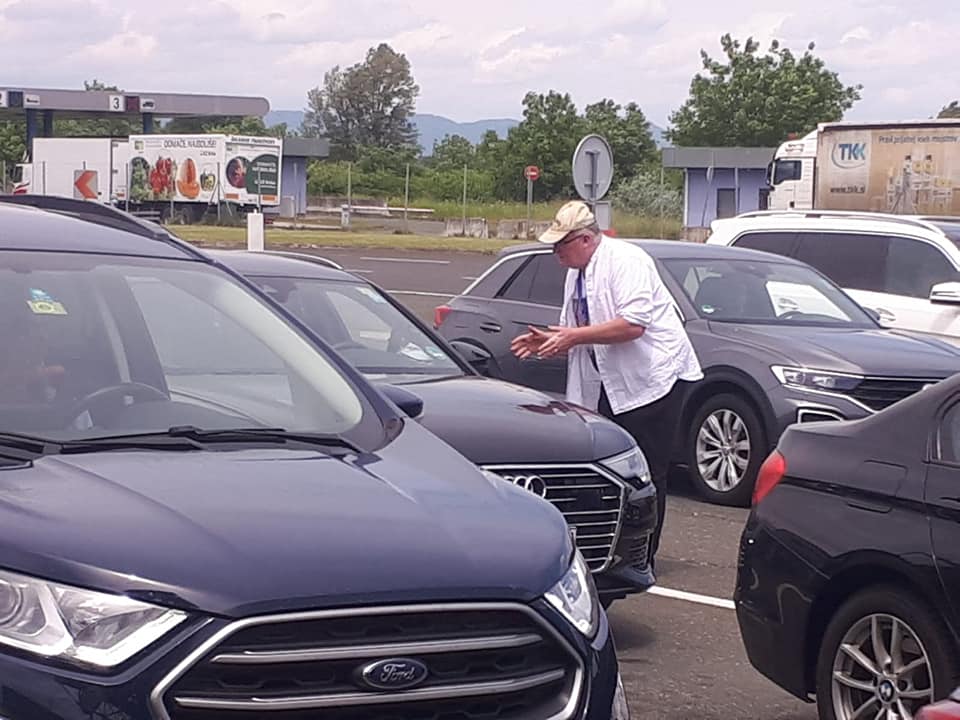
I asked a few of the tourists coming into the country, and I was surprised at the amount who had filled in the form - they all showed me the police confirmation print out, which they had showed at all transit borders on the drive from their homeland. The system seemed to be working superbly.
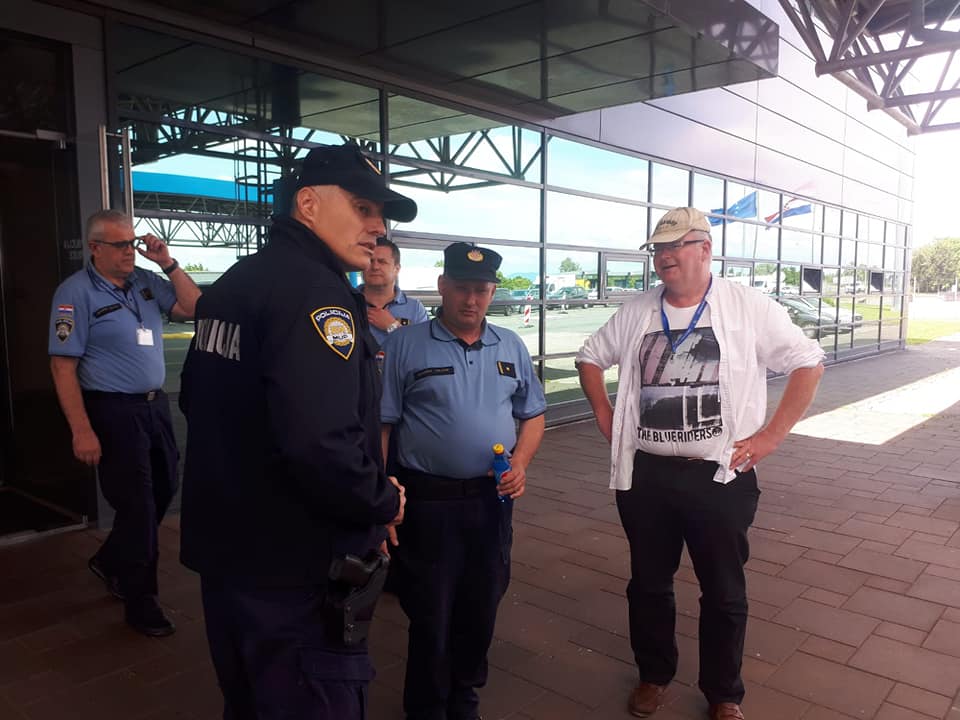
What a day! Certainly one of the most interesting mornings in my 18 years in Croatia.
My thanks to all the team at the Interior Ministry and the border control and border police. A supremely efficient operation.
And you STILL have time to answer all those tourist emails...
For the latest travel info, bookmark our main travel info article, which is updated daily.
Read the Croatian Travel Update in your language - now available in 24 languages
Croatia Border Patrol Tracking Migrants With Portable Thermal Imaging
During the 2015 migrant crisis, Hungary and Slovenia built border barriers to thwart the influx of illegal migrants. Until recently, Croatia border guards have faced the daunting task of manually monitoring their unfenced 1,326 km border, which is also a non-Schengen EU border. However, with the help of advanced thermal imaging technology, Croatian border guards have finally gained an edge on stopping illegal migrant movement.
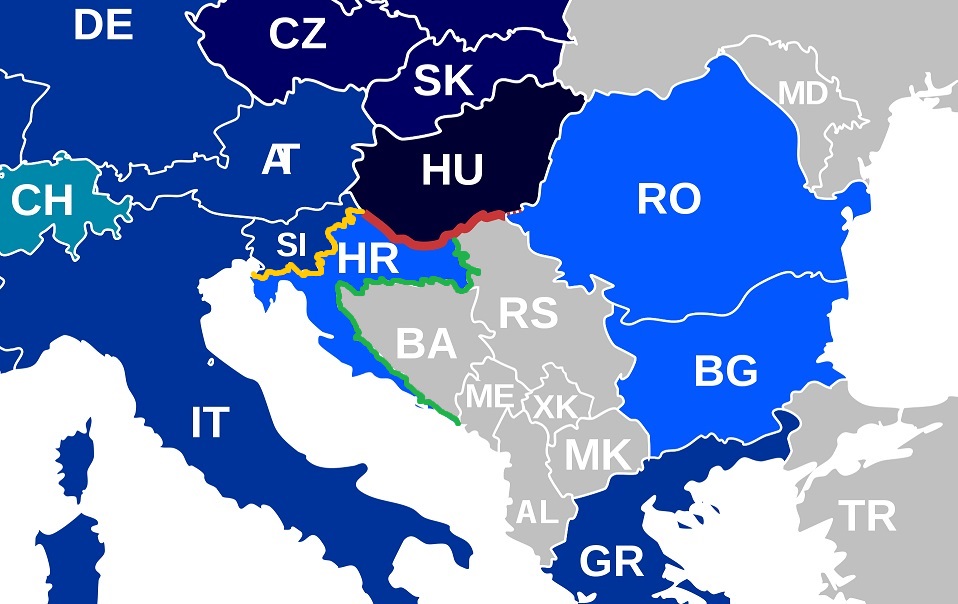
Hungary Border Fence (Red) | Slovenia Border Fence (Gold) | Croatia Border No Fence (Green) | Wikipedia
Unfenced Croatia EU Border 1,326 Kilometers Long
The Hungarian border barrier, which spans the borders of Serbia and Croatia, is 523 km long. The Slovenian border with Croatia spans 670 km. By contrast, Croatia shares a combined 1,326 km unfenced border with Bosnia and Serbia (1009 km with Bosnia, 317 km with Serbia). And migrants, many of whom are biding their time in nearby border camps, make repeated and daily attempts to enter Croatia from both countries, a practice which they call "The Game".
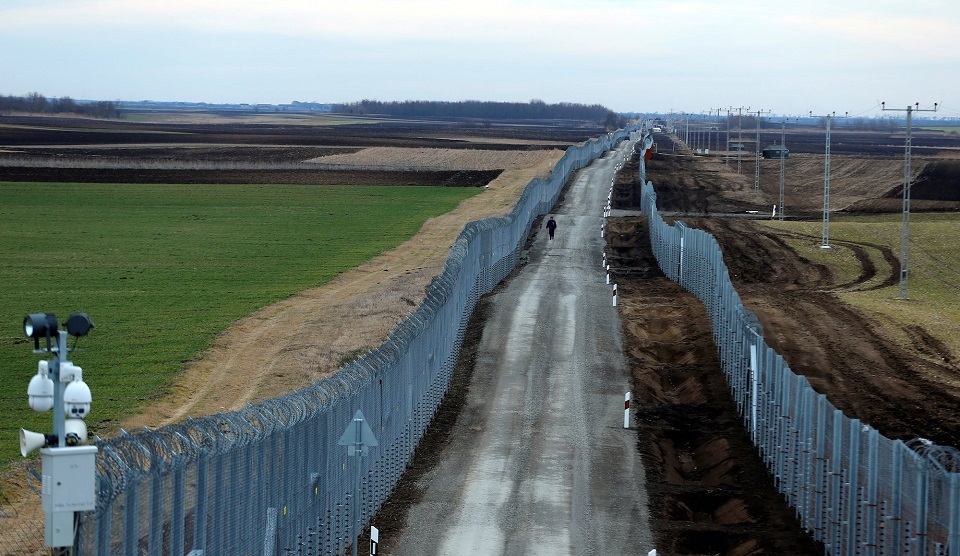
Hungary Border Fence | Wikimedia Commons
Electrified Hungarian Border Barrier Stopped Illegal Migration
Once completed in 2015, the Hungarian border barrier effectively halted migration into that country. It is equipped with parallel barbed-wire fences, floodlights, security cameras, and loudspeakers which blare warnings in English, Arabic and Farsi. The fences also deliver a mild electric shock upon contact, and have rendered any potential accusations of migrant pushbacks a moot point.
The Slovenian border barrier, while not as advanced, has also deterred attempts by migrants to enter Croatia’s Northwest neighbor. Both fences have effectively left many migrants, who are seeking entry into the Schengen zone, stranded in Croatia. While trapped in Croatia, they work with smugglers or attempt to continue their journey to Italy, Germany and France on their own.
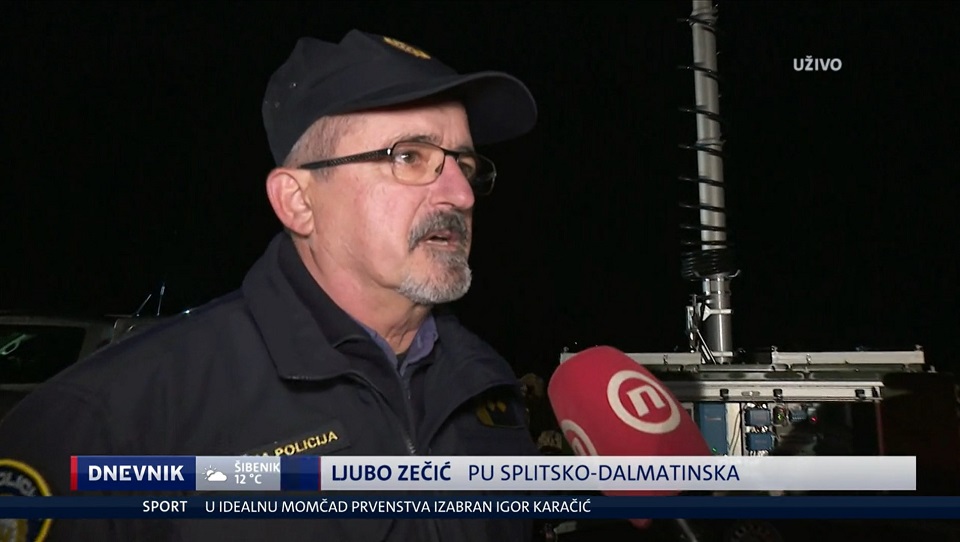
Croatia Begins Using Mobile Thermal Imaging Cameras
The Croatian border is now being protected by mobile thermal imaging cameras which can detect people illegally trying to enter Croatia from up to distance of several kilometers. The Nova TV/Dnevnik news team went to the border on January 26, 2020 and was the first to see how the 6 million EUR system works in practice.
Croatian police departments located on the illegal migrant route and roads leading to Croatia have been equipped with 17 Flir mobile camera systems.
Ljubo Zečić of the Splitsko Dalmatinska County Police Administration said that there are two devices are in their jurisdiction and indicated that it is very helpful that the system is mobile and can be easily transferred to positions which have been detected as frequent crossings.
Most Migrants Enter Croatia From Sarajevo and Mostar
"Most migrants coming from Bosnia are attempting to enter Splitsko Dalmatinska County from Sarajevo and Mostar. In 2019, our police department reported a 30 percent increase in illegal migrants and a 54 percent increase in smugglers," Zečić said.
Tomislav Poljak from the Trilj station demonstates the Flir thermal imaging device, which has already thwarted the plans of numerous migrants and smugglers to enter Croatia illegally.
"Our colleagues are walking about two and a half kilometers from us, and we can detect exactly what is happening at that distance with this device," explains Poljak.
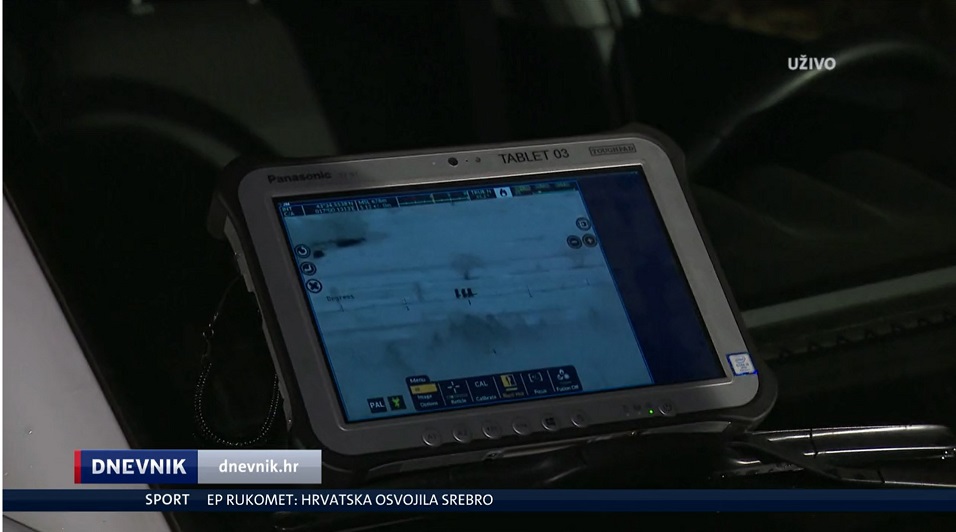
Migrant Cell Phones Permit Communication and Coordination
As soon as Tomislav's work shift began, he noticed some suspicious activity on the border. It was likely that someone was attempting to enter Croatia on a gravel road, which is often used by migrants going to Sinj. The nearest border control team was immediately dispatched to the field.
"A lot of migrants have very good cell phones and are quite well informed. And nowadays, they use temporary sim cards with these cell phones. They always have another trick up their sleeves,” Tomislav points out.
Cameras Detect Migrant Movement Across Bosnia Border
Almost a kilometer above sea level, the police officers found an abandoned truck which migrants often us to seek shelter from bad weather. Since there was no one in the truck, the Trilj border guards continued their search with manual thermal imaging devices.
"Without this technology, it would be much harder to do our job because you cannot see anything in the dark with human eyes," Zdenko explains.
The police action was soon abandoned because the suspect returned to Bosnia and Herzegovina.

Cameras Can Be Moved Within 20 Minutes
The benefits of these devices are numerous. "If we need to move it to another location quickly, it takes us maybe 15-20 minutes to pack it up and drop it off," Tomislav says.
The cost of one Flir thermal imaging camera is almost 2.7 million HRK (362,789 EUR). If you approach it; the device automatically notifies police officers on the ground and issues a verbal warning. With the help of this technology, police believe that they will finally be able to stay a step ahead of smugglers and people trying to enter Croatia illegally.
Follow our Politics page to keep track of the migrant crisis in Croatia and efforts to control illegal border movement.
Croatia Border Town Shaken By Migrant Burglaries: Ilok Locals Live in Fear
While EU politicians, leaders, foreign journalists and human rights organizations play political football, assign blame and discuss solutions for the migrant crisis along the Balkan Route; frightened residents of Croatia border towns, like the town of Ilok, are locking themselves in their homes at night out of fear of burglaries and much worse.
“We are scared! In the middle of the night, we caught migrant burglars circling our house. I thought my son was going to work, but sensed something suspicious and saw two masked people at our front door,” reported one shaken Ilok local.

(Note that Hungary has built an electric fence spanning its border, which has halted migration.)
Croatia Police Not Publicly Reporting Ilok Migrant Burglaries
In the Fall of 2015, during the great migrant crisis, more than half a million migrants passed through Eastern Croatia on their way to more economically desirable Western European countries. Not a single major incident, or even any minor incidents, were reported during the entire relocation process. However, four years later, locals in some border towns in the same part of Eastern Croatia are living in fear, according to Branimir Bradarić/Večernji List on January 25, 2020. Migrants are entering their towns and villages and burglarizing shops, and a recent attempt was even made to break into a house. There have been also reports of car theft and one incident ended with a car accident in which several migrants were injured while trying to escape authorities in a stolen vehicle.
All this has happened over the last half year but there were signs of trouble even before then. However the police have avoided discussing these burglaries in their regular reports the media. Therefore, frightened residents have decided to go public with these incidents on their own. The situation has deteriorated most notably in the Eastern Croatia city of Ilok, where residents are no longer willing to remain silent about their fears for safety in their own homes.
Frightened Ilok Residents Reporting Migrant Burglaries Directly to Media
The last in a series of frightening events occurred ten days ago when two migrants, dressed in dark hooded jackets, tried to break into the home of the Lončar family in Ilok. Remembering that day, Irjana Lončar recalls hearing noises around 4:30am.
“We were sleeping when I heard noises in the yard and by the door. It sounded like someone was walking nearby and I thought it was my son leaving for work. But the lights were off, which was strange, so I got up to see what was happening. At that moment, I saw two unfamiliar masked people at our front door. They were trying to force our door open by destroying the lock with a device, which I think was a drill. I started screaming and yelled for my husband, but the two burglars had escaped by then,” recalls Lončar, who was still trembling with fear.
Since the lock was destroyed, her husband could not get the front door open immediately. After succeeding, he jumped into their car and tried to follow the migrant burglars. Irjana watched from the window as the pair fled down the road. Later, she discovered that the burglars had also been trespassing in their yard and had broken into their attic, where they stole two knives and a knife sharpener. They swiped the Lončar’s New Year's light decorations and made off with her husband's hunting backpack. Then she discovered that the pair had tried to open the kitchen window with a sharp object to enter the house from there. Police responded to her call for help very quickly, but by that time the migrants had long vanished into the darkness.
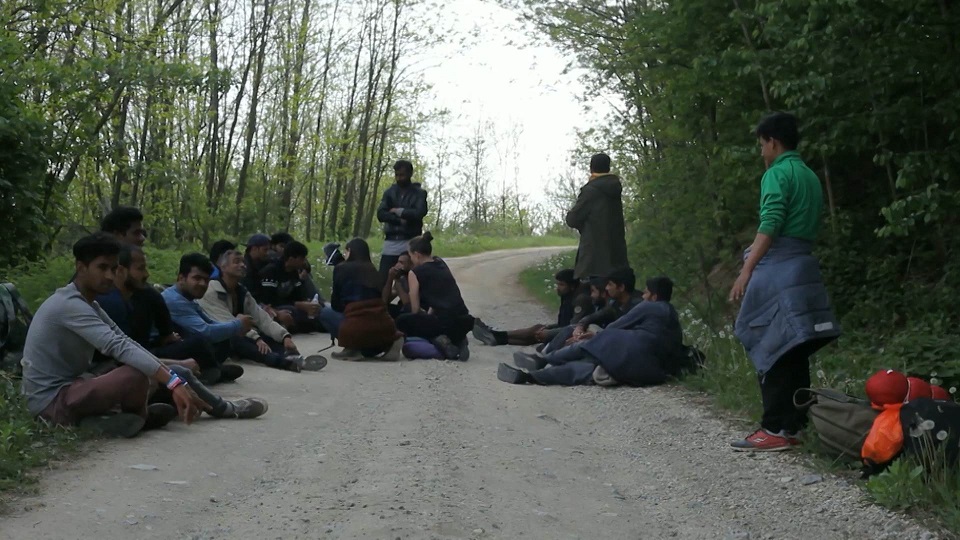
Ilok Residents Concerned for Safety and Property
“I'm really scared now. From that day, my life has not been the same. I have a difficult time sleeping and am always on the alert for unusual noises. Every little noise will jolt me wide awake as does the sound of barking dogs. I'm afraid that they'll try to break into my house again. And, I'm particularly scared because nobody knows what these people are prepared to do. Nor does anyone know what they would have done if they had entered our house, or how it all could have ended. We just want to feel safe in our town again, and especially safe in our own home. Unfortunately, that's not the case anymore,” Lončar admits.
She adds that, after their burglary, they started hearing about several similar break-ins throughout town – and other locals have witnessed migrants breaking into homes. She claims that there are currently several unoccupied houses in Ilok, and migrants are breaking into them so they can hide temporarily before continuing their journey further into the interior of Croatia and the rest of Europe.
The Ilok locals have also reported finding discarded clothing all over town as migrants change their clothes before continuing their journey westward. There have also been reports of migrants crossing the border and continuing down the road before they are caught by police.
Ilok Break Ins and Burglaries Widespread
Jadranka Tomašić’s shop has also been hit by migrants. They have succeeded in burglarizing her shop in two out of three attempts. In both of those cases, according to Tomašić, they stole certain brands of cigarettes, some alcohol and Nescafé. About 20,000 HRK (2687 EUR) of merchandise has been stolen from her shop, and the front door of her store was damaged too. They also ran off with all the cash they found.
“I do not feel safe here anymore, and I am not the only one. Other Ilok residents don’t feel safe in their town either. In addition to everything else, you can see the effects of fear in front of elementary schools at the end of the school day. Parents are now coming to school in cars to pick up their children. People are locking themselves in their homes before dark and are avoiding going out in the evening. No matter how you look at it, the situation is not at all simple or straightforward,” Tomašić reveals with concern.
She adds that in addition to the burglaries in her shop, there have been burglaries in the suburban settlements of Bapska and Šarengrad. After the burglary in Šarengrad, the perpetrators were apprehended. After one of the burglaries at her store, a large knife was found, which was to be believed to have belonged to migrants. She also recalls a situation that occurred last summer when a migrant tent was found in a corn field across the street from her store, during the corn harvest. It was in a populated part of Ilok and nobody aware of that it was there until the harvest.
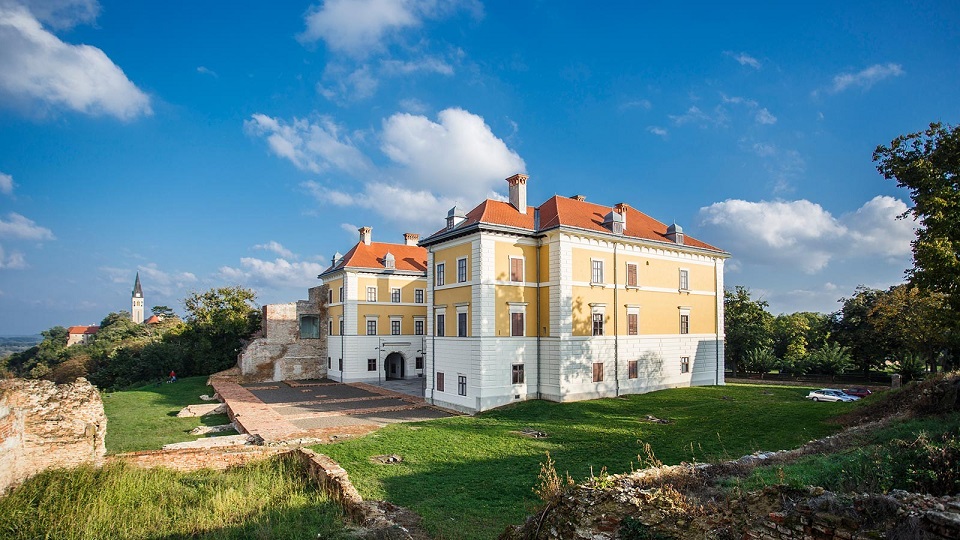
‘We just want to live and work normally’
“We just want to live and work normally, but that's not the case now. The worst part is that feeling of insecurity. These people have shown no fear, and that is why we are very afraid. It really bothers me that nobody is talking about this. I have no objection to the job the police are doing and do not expect that they, or the mayor, will be able do something overnight. They cannot do anything because they do not have the necessary tools, but this problem must be addressed in a systematic way,” Tomašić points out. She adds that many locals have been reporting burglaries, including those who have had their safes broken into and contents stolen.
The well-known Ilok agronomist and winemaker Ivan Buhač was also hit by migrants, but he managed to avoid burglary. He left his unlocked vehicle parked outside his house. Someone entered it and wanted to start it up and drive off. As the keys were not inside; they emptied the vehicle in search for the keys. However, the car itself was undamaged.
“The fact is that these incidents, which are extremely unusual for Ilok, happen regularly now and so it's not surprising that people do not to feel safe. Recently, burglaries and attempted burglaries have been reported in people’s homes. We all hope that this will all end soon and that we can go back to living normally, because this is not definitely the case now,” Buhač admits.
Commenting on recent events, Ilok Mayor Marina Budimir says the city authorities are aware of the problem and are in constant contact with the Croatia Interior Ministry and police in Ilok.
Ilok Police and Mayor: No Reason to Panic
“Everyone is working as hard as they can to resolve this problem, but I don't think there is any reason to panic. The problem is very present, and it’s important to compare how our residents live now as opposed to before: how they move about in town and go to work and school. Unfortunately, this problem in Ilok will continue since we are right on migrant route through Croatia from Serbia and beyond. Another problem is that the migrant camp in Serbia is located near the border crossing. Migrants are housed there, but they can leave the camp freely. That's why this is happening,” says the frustrated mayor.
She is also quick to point out that she has demanded increased police surveillance of the border and adds that there haven’t been any reported attacks on residents so far. The mayor also indicates that movement over the eastern border will be harder to detect as vegetation begins to grow again, which will make monitoring more difficult. Nevertheless, police have surveillance equipment in place. Indeed, police patrols are more visible in Ilok and the surrounding area. Unofficial reports from the police indicate that the border has been steadily monitored for months, and that the burglaries and break-ins in Ilok are indeed a problem, but they do not consider this problem dangerous because there haven't been any reports of violence or threats.
Croatia Police Point Out Two Types of Migrants
They also explain that the two types of migrants should be distinguished. There are passers-by who are trying to somehow cross the border illegally and move on. The others, who are thought to be causing the problems in Ilok, are located along the border crossing at the camp in Principovac, which they consider to be the main issue. They can move freely in that camp, and illegally cross the Croatian border to steal from locals so that they can raise money for travel to the West.
The stolen goods are then resold at the migrant camp, which was confirmed by the recent case of two migrants who were arrested after breaking into a shop in Šarengrad. After that, police claim, the burglary indicents stopped. Officers understand the Ilok residents’ sense of insecurity but say that there is absolutely no reason to panic and that the police are on the ground doing their job.
Follow our Politics page for updates on the migrant crisis in Croatia.
Human Rights Watch: Croatia Forcing Asylum Seekers Back to Serbia, Alleged Violence
More migrant tensions on the Croatian border with Serbia, as Human Rights Watch report asylum seekers being forced back to Serbia, with allegations of violence by officials on January 20, 2017.
Interior Ministry Invests 48 Million Kuna in Border Surveillance
Ericsson NT and Interior Ministry signed an agreement on implementation of a border monitoring system.
Croatia Reportedly Gives Away Two Kilometres of Territory
New border crossing with Bosnia and Herzegovina was built far away from the actual border.
Hungary Wire Fence a Big Success: Meet the Latest Victim
It is more than a year since Hungary erected its controversial border fence with Croatia to keep out migrants. It is proving equally effective at destroying the way of life of wildlife in the area. Meet the latest victim from the border on November 2, 2016.



